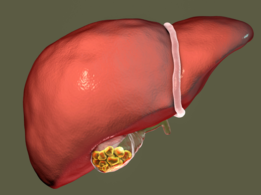01/6Different types of COVID-19 vaccines
)

With the onset of the novel coronavirus, scientists and medical professionals worked tirelessly to develop an effective clinically approved vaccine for the same. Initially what seemed impossible is now a reality and not only have experts manufactured COVID vaccines in such a short span of time, but they have also developed different types and versions of it too.
While all COVID vaccines work towards creating antibodies to fight off the deadly SARs-COV-2 virus, they have been designed differently and therefore, have their unique ways to trigger immune responses. Here are the 4 different types of COVID vaccines and an insight into how they work.
02/6Messenger RNA (mRNA) vaccine
)

The Messenger RNA (mRNA) vaccine triggers an immune response by activating cells to fight the deadly pathogens. In terms of COVID-19, the mRNA vaccine instructs the cells to make a protein or a piece of coronavirus spike protein that produces an immune response in the body. This will in turn create antibodies needed to battle the deadly SARs-COV-2 virus. It is to note that these artificially created spike proteins cannot replicate like the original virus. Both Pfizer-BioNTech and Moderna vaccines have been developed through Messenger RNA (mRNA) technology.
Read more: Coronavirus: What makes mRNA vaccines better than traditional vaccines?
03/6Viral Vector Vaccines
)

Viral Vector vaccines use another virus to generate antibodies to fight deadly pathogens i.e. it triggers an immune response by using a modified version of a different virus, known as a vector. For coronavirus they all use adenoviruses, a type of common cold virus, which attaches itself to cells and injects DNA that tells the cells to make coronavirus spike protein.
Following the production of spike protein, the immune system detects these invaders and creates antibodies. However, clearing all the myths around this type of vaccine, the US-based Center for Disease Control (CDC) clarifies by saying, "The genetic material delivered by the viral vector does not integrate into a person’s DNA."
As of now, the vaccine developed by the Oxford-AstraZeneca uses viral vector technology.
04/6Protein Subunit Vaccine
)

The Protein Subunit vaccine uses parts of a virus that best stimulate your immune system to fight off the deadly pathogen. While this method minimises the risk of side effects, it also means the immune response may be weaker. This is why these vaccines often require the incorporation of adjuvants to generate a stronger response because the antigen alone is not enough to boost the immune response. Novavax is working on a protein subunit COVID-19 vaccine.
05/6DNA-based Vaccines
)

Also known as the third-generation vaccines, DNA-based vaccines use engineered DNA to induce a response against the virus. According to the World Health Organisation (WHO), this "radical new approach" offers several advantages over traditional vaccines, which include "improved vaccine stability, the absence of any infectious agent and the relative ease of large-scale manufacture."
In India, Gujarat-based Zydus Cadila has indicated that it is likely to apply for emergency use authorisation. It is a 'plasmid DNA' vaccine that uses a non-replicating version of a DNA molecule called plasmid, which helps prepare a harmless version of the spike protein present on the SARS-COV-2 membrane.
06/6How important is it to get your COVID shot?
)

Considering COVID-19 affects everyone - young or old, it is important that each and every person falling under the eligibility criteria must get themselves vaccinated. While you may not feel the need to get vaccinated considering you are young and have no pre-existing comorbidities, however, it is crucial that we protect the most vulnerable in our community and that can only be achieved through mass-vaccination.












































































![[New!] Level 4 - 30 minute tempo fat-burning!
[New!] Level 4 - 30 minute tempo fat-burning!](https://static.toiimg.com/thumb/79327298.cms?width=147&height=86)













closecomments
SIGN IN WITH
FacebookGoogleEmail